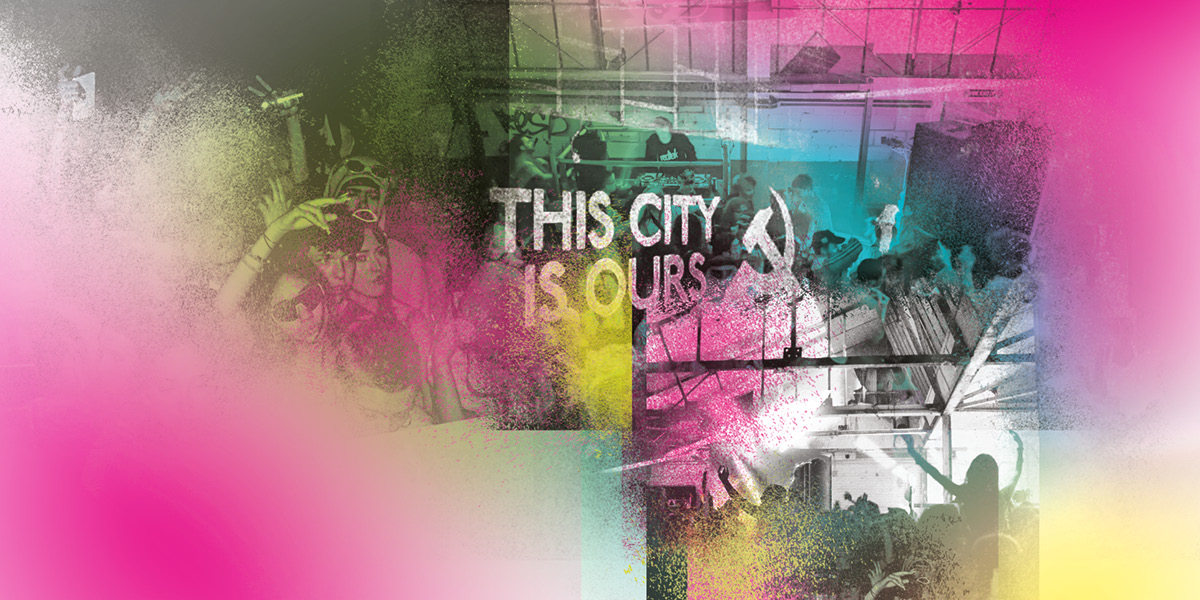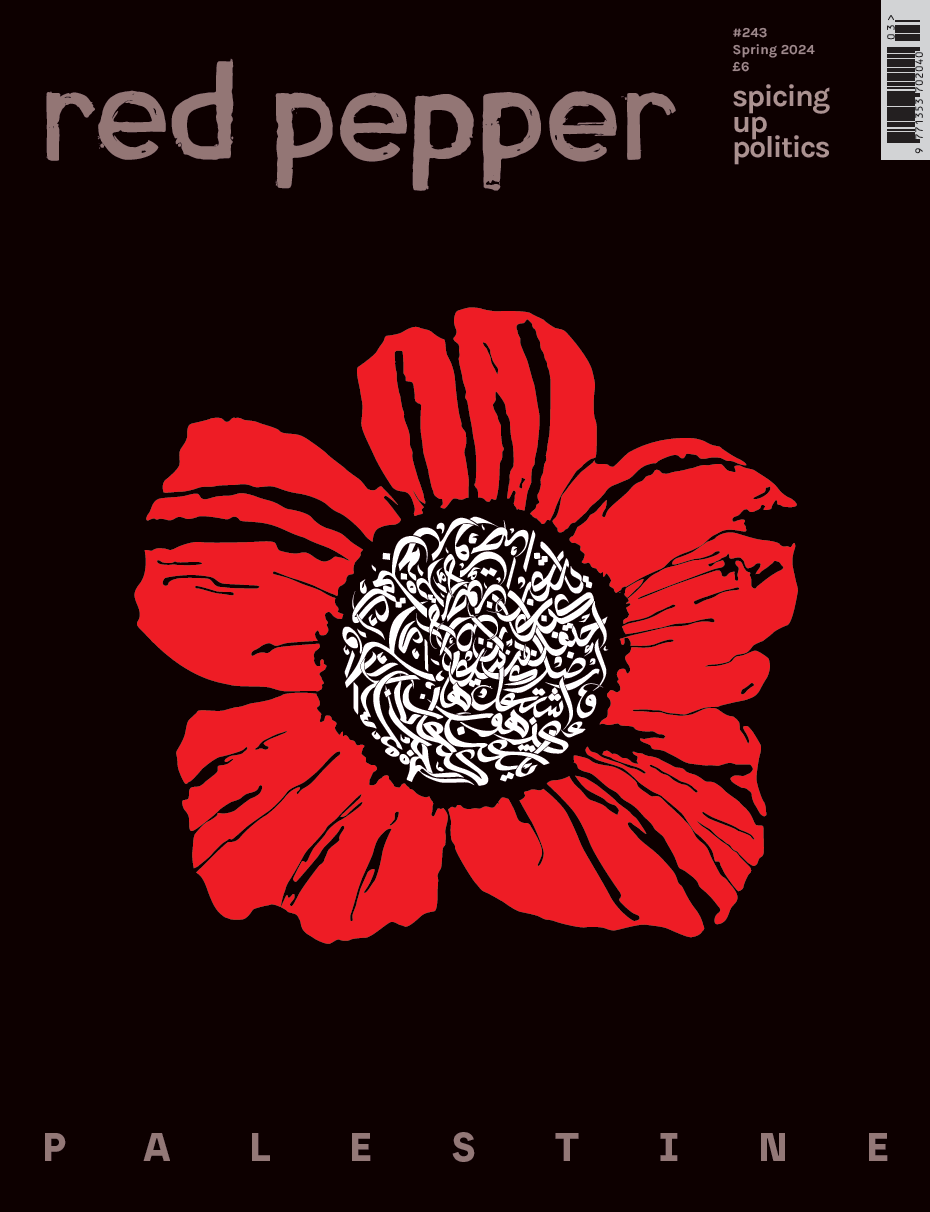Rave subculture has attracted considerable infamy over its relatively short lifetime. However, among all the lurid tabloid reporting of hedonistic free-for-alls, rave also developed a reputation for being shallow and apolitical. As Jeremy Gilbert and Ewan Pearson write in Discographies, ‘Rave culture’s … experiences have thus been articulated with a libertarianism which is so anti-political as to be self-defeating.’
Others acknowledge that early rave subculture was a politicised space – particularly once mobilised in opposition to the UK government’s Criminal Justice and Public Order Act (CJA) 1994. According to this narrative, however, the CJA politically hobbled the scene and channelled it into more commercially successful and politically insipid directions.
These accounts are all flawed. Rave has, since its emergence, been a subversive and radical cultural space. And it remains so to this day.
Political roots
Rave culture emerged in the UK in the mid-1980s. ‘Unlike punk, reggae or folk music,’ Evan Smith blogged in 2015, ‘acid house and early rave culture did not really get political and for most, was more an apolitical rejection of the Thatcherite status quo.’
Yet the apparent lack of radical ideology belies the politicised nature of the scene. Rave’s roots reached back into the black and queer communities of Chicago, where house music was first pioneered. As Blair Black recently wrote in Current Musicology, ‘liberatory politics’ were ‘central to [these] black queer underground scenes in the US’. As these scenes migrated to the UK they were first embraced here by black communities, whose similar experiences of oppression and marginalisation – such as through the organisation of Jamaican British sound system culture – were hugely influential in the subsequent development of rave across the late 1980s.
Rave became more explicitly political in the early 1990s, as sound systems such as Spiral Tribe began holding increasingly large ‘free parties’. ‘The technique then… was to get to some [common] land on Friday afternoon at just about the time that the magistrates courts closed,’ Charlie Hall, a member of Spiral Tribe, tells me. ‘If you got on the land on Friday, you were free to just party until at least Monday because they couldn’t go and get an injunction and get you off.’
Simply put, organising raves at which people play music and dance can help to forge the bonds that form the basis for collective action
These outdoor raves often attracted thousands of people, many of whom were also involved in progressive social movements such as anti fascism, environmentalism and animal rights. Even if there was little coordination, these were certainly politicised spaces. ‘There was just a general sense, not so much of organisation, but of, you know, “We’re all on the same page’’,’ says Charlie. ‘So even though we didn’t have [for example] anti-fascism badges, there was no question that we would all agree on that front.’
The growing popularity, and increasing media coverage, of these free parties caused the governing Conservatives to crack down hard on the rave scene. Following Spiral Tribe’s now-infamous 1992 rave at Castlemorton, at which 20 40,000 people attended, the Tories announced their Criminal Justice and Public Order Bill.
The legislation had clauses specifically designed to give the police powers to shut down raves. Those in the rave scene made a valiant effort to resist the CJA by arranging protests, organising raves and releasing records. Nevertheless, the bill became law in 1994. Charlie estimates that because of this around half the people involved in the scene ‘dropped off’.
After the Criminal Justice Act
In his excellent book about the history of dance music in the UK, Party Lines, Ed Gillet posits that the last free party held in defiance of the CJA ‘was not just the last full-scale free party in Britain, but the end of a far deeper and more meaningful lineage of anti-establishment revelry… UK dance music would never again threaten or promise the single-handed overthrow of society.’
There has, no doubt, been a process of commercialisation in this subculture (as there has in culture more generally). However, unlicensed raves and free parties continued after the CJA, and even seem to have been increasing recently. More importantly, there are also people who still operate at the intersection of rave and radical politics.
A striking illustration of this is Redtek, a London-based socialist sound system who organise raves around the UK. Indeed, Redtek articulates a vision of rave that is markedly more radical than anything experienced prior to the CJA. ‘Rave culture is not anti-culture, or a statement of timelessness or placelessness; it’s folk culture, rooted in local traditions here in Britain,’ they explain to me. ‘So in promoting the continuation of rave culture we are defending and extending a tradition, one which is now over three decades old. It is, we argue, the most authentic expression of proletarian culture in living memory, almost unmediated by capitalist thinking: workers compelled to make music themselves at home and then play it to each other in spaces that are not only informal but often directly conflict with the idea of who gets to use what property under capitalism.’
Theirs is a vibrant scene that agitates against the capitalist status quo, their events collective works of performance art that unite workers in joyous opposition to the structures that constrain them: ‘Knowing that the organisers of an event are just workers like you and not interested in lying to you for any marketing reason, just wanting to share their passion for the culture, creates the emotional basis for communist politics – a politics that disavows the prevailing idea that some have “earned” a right to things that make life beautiful and others have not.’
This isn’t mere political rhetorising. Social movement scholars, psychologists and neuroscientists have explored the relationship between music, social bonds, and collective action. As the sociologist William G Roy argues, ‘Music can facilitate actual collective actions, both by reinforcing commitments and by energising a group as it prepares for action.’
Simply put, organising raves at which people play music and dance can help to forge the bonds that form the basis for collective action. And history shows us that when social movements and political groups do this right, it helps them to achieve their goals.
Of course, social change rests more on organising and effort than dancing and fun. On the other hand, the latter makes the former considerably more palatable. A fun and vibrant culture not only helps to attract more people to the cause; it also helps cement the bonds of camaraderie of those already involved. Crucially, rave is a perfect culture for this. From its inception it has been a haven for the marginalised and oppressed, a site of rebellion and resistance.
As Redtek told me, ‘We have a song we like to refer to as a summation of this, an original 1993 rave classic by Fat Controller – its sample: “In complete darkness, we are all the same.” This encapsulates the ideals of rave; here we will build a space just for us, free of the capitalists, where we will be in unity and equality.’











